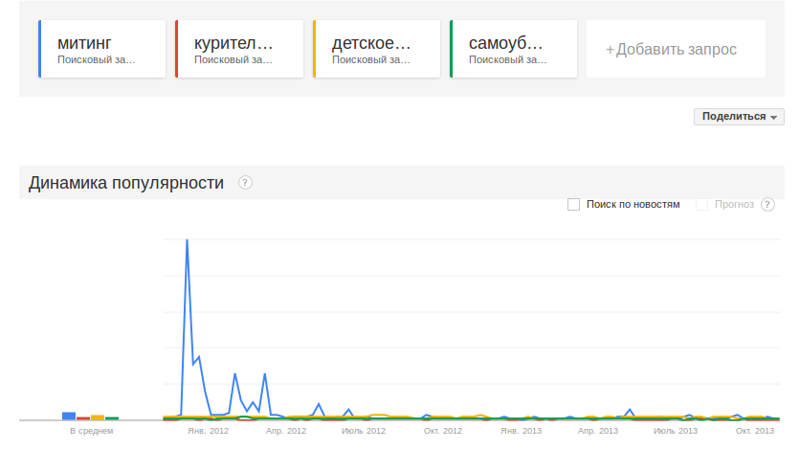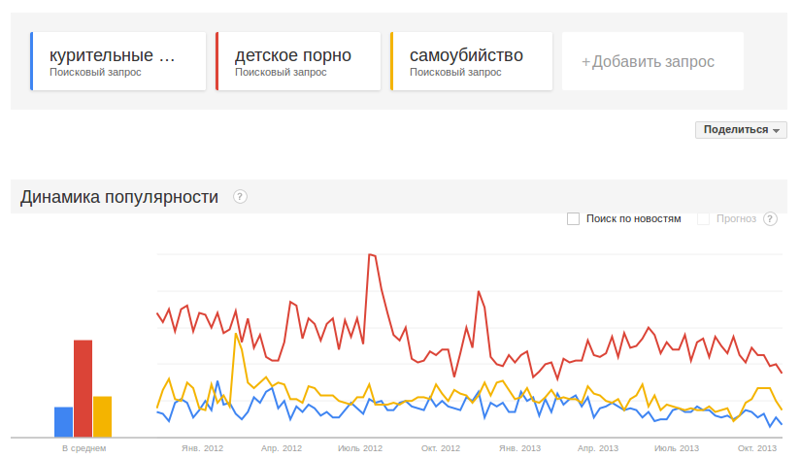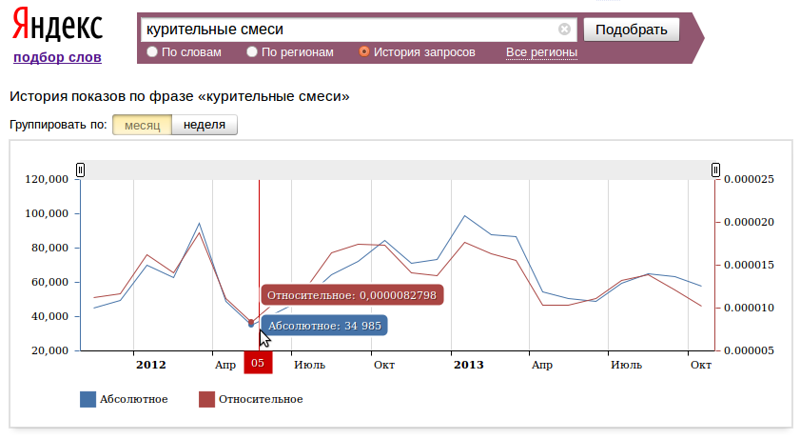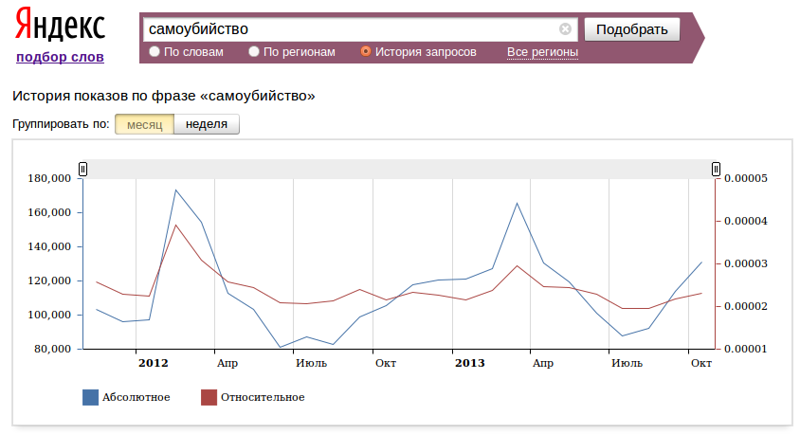The true causes of blocking sites. Open Data Survey

About two years ago, the state set a course for active intervention in the Internet space and its regulation. It's time to sum up the gradual increase of censorship on the Internet.
If you remember , in the summer of 2012, the State Duma suddenly adopted amendments to 139-FZ “on the protection of children from harmful information.” This was explained by the need to protect our children from pedophiles and drug addicts, as well as from those who are inclined to commit suicide. The law, of course, contained a garnish in the form of labeling products for children with signs of 18+, etc., but the meat of these amendments was in the form of a censorship mechanism by blocking websites.
In this mini-study, I will act as a captain of evidence and show what everyone already knew, but for more convincing I will give a number of objective indicators. So now it will be possible to operate with concrete figures!
')
So let's see if the introduction of censorship was really dictated by the need to protect our children.
For the analysis, I used the data from Google and Yandex search queries. As can be seen from Google's graph, users were interested in "child porn" ( yellow line ) in 2005-2007. Since 2008, the number of requests for "child porn" is significantly reduced. Perhaps this is due to the policy of Google, which in general is itself cope with child pornography. Where child porn lovers went, you can guess - most likely, in anonymous networks.

It is no secret that, in general, not all drugs are sold through the Internet, but only smoking mixtures and other “legal” powders. Therefore, I looked at the number of requests not just for drugs, but for smoking mixtures. If you take a closer look at the graph (red line), you can see that user interest in smoking mixtures appears in 2009 and reaches a peak in January 2010, when they were officially banned from selling on the street and they were no longer legal, this very moment is the beginning of a decline in the number queries, which then remains fairly stable.
The number of requests for suicide relative to the total number, as can be seen from the graph, is extremely small.
So why introduce site blocking if the number of requests for horrible horrors is so low?
And the solution lies in the interest of users to the rallies. Look at the “rally” request schedule (blue line). Huge interest popeleski in January and March 2012.
And indeed, if at first the deputies lied that there would be no caesura, and the law was directed only against the pedophile lobby and the Colombian drug cartels, before the New Year holidays in 2013 a law was passed to immediately block websites calling for unauthorized meetings, which is already political censorship, not even covered by the protection of children.
We have another data from another popular search engine, Yandex. But Yandex gives statistics of requests only for the last 2 years, therefore it would be more correct to give Google statistics for the same period.

For the convenience of perception, remove the request "meeting".

The general trend of reducing the number of requests for “child porn” is again visible, but there are three obvious bursts of interest in this topic, which I will discuss in more detail when analyzing Yandex data. For the rest, it is clear that the adoption of the law does not affect in any way the search queries of users, except for the query “suicide”, which has an inexplicable peak on February 15-11, 2012.
Now look at the Yandex schedule, where you can find that the greatest interest in child pornography appears during the 139-FZ discussion: first peak - December 2011 - the Safe Internet League drafted a law , April 2012 - the beginning of the law discussion , July - adoption of the law, November - introduction law in force.

Deputy Mizulina claims that:
Internet business makes up 80% of income for child pornography.
Looking at the advertising that she made to this phenomenon by her own law, I want to ask her if she gets a share of this business?
It is important to note that deputies are less afraid of our children than of their own power. Thus, when protecting children from sexual crimes, pedophiles are given several days to remove traces of their crimes from the Internet, but in the case of calls for meetings, websites will be blocked instantly.
Interestingly, the adoption of the law had no effect at all on the number of search queries “smoking mixtures”. Two reductions in the number of requests fall on the month of May each year and, apparently, have nothing to do with the law.

Interest in suicide also does not respond to the law. But it will be interesting for psychologists to analyze the pattern: the peak of requests falls on the last months of winter, but in the summer people are much less interested in suicide.

Of course, the analysis of search queries without analyzing Rosstat statistics is incomplete. But, unfortunately, for the 13th year it is not yet.
I can only say that according to Rosstat, the total number of all suicides falls after the 90s, and even the number of crimes related to narcotic substances has also decreased in recent years.
Summarizing what was said. From the cited statistics on requests, it is clear that the law had no effect on the search by users of smoking mixtures and information about suicides, and the number of requests for “child porn” even increased during the discussion, adoption and entry into force of 139-FZ.
But why these analyzes, if the deputies have already discovered their true face? The law on instant blocking of websites calling for “rallies held in violation of the law” comes into force on February 1, 2014.
Happy New Year to Enhance Censorship!
PS This post was written in the framework of the data expedition. Many thanks for the help to Anna Sakoyan and Irina Radchenko.
Source: https://habr.com/ru/post/208060/
All Articles